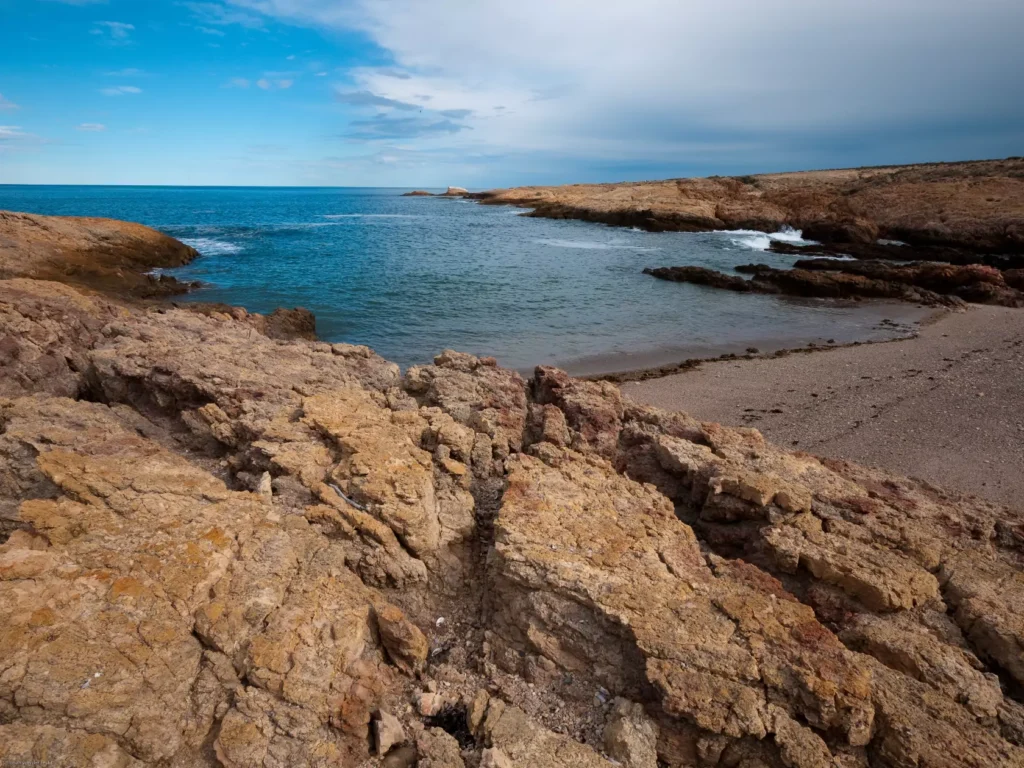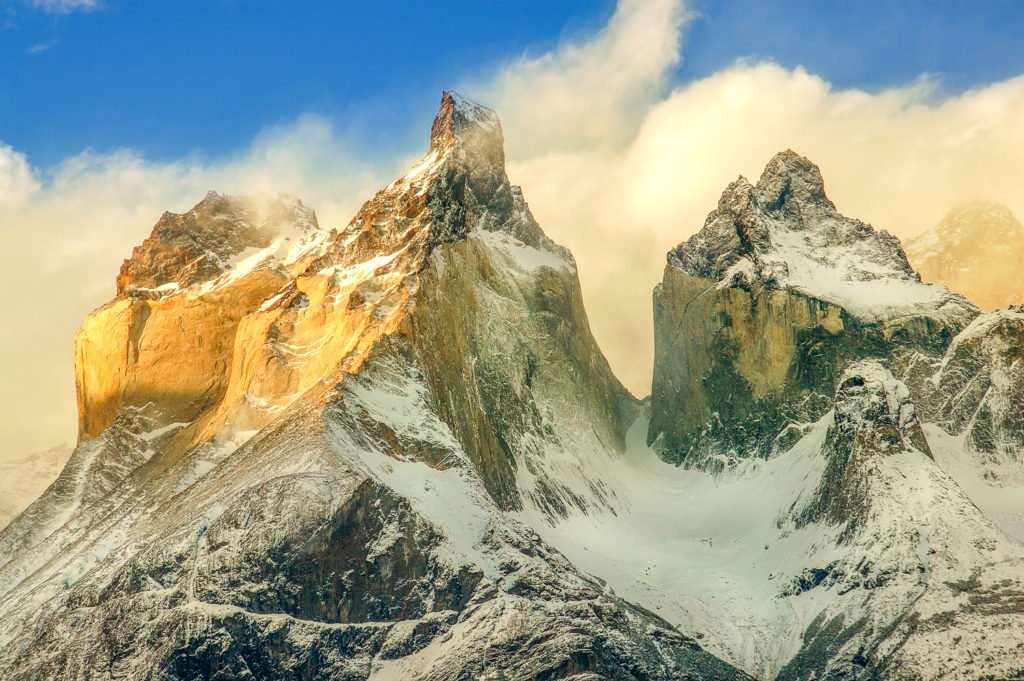Smile. You’ve LANDED in Patagonia.
Patagonia is the edge of the world—a land of never-ending plains and towering mountain ranges that stretch across Chile and Argentina. The diverse landscapes offer plenty of opportunities for outdoor enthusiasts, from hiking in iconic national parks to experiencing the awe of walking around glaciers.
Beyond the natural beauty, it also represents both the new hope of immigrants and the ancient domain of the Mapuche and Tehuelche.
LOCATION ARGENTINA & CHILE
LANGUAGE SPANISH
CURRENCY PESO
READ IN PATAGONIA BY BRUCE CHATWIN
SIP & TASTE ASADO & YERBA MATE
EXPERIENCE RIDING WITH GAUCHOS
Start your journey today
Speak with one of our travel designers and let us create a tailored itinerary for you in Patagonia.
Our Patagonia experts have put together a list of some of their favorite spots, ranging from the glacial fjords of Chilean Patagonia to luxury lodges made for refined relaxation. So whether you’re looking for adventure travel or just want to spend time with your family, LANDED has you covered.
Destinations
Where to go in Patagonia
We tailor your itinerary to meet your unique requirements. As local experts, we want to ensure that you don’t miss out on the following highlights:

Perito Moreno Glacier
This stunning glacier, located in the Los Glaciares National Park, is a must-see for any Patagonia visit. Take a boat tour and have an up-close experience with the crash of icebergs as they calve into the lake below.
Read More

Torres del Paine
This spectacular national park is home to some of the most stunning natural wonders in South America. You’ll see everything from the massive granite monoliths of the Paine massif to Lake Grey’s glacial waters.
Read More

El Chalten
El Chalten is the gateway to the Los Glaciares National Park. It’s a great place to go hiking, with many trails that lead you through stunning landscapes and amazing viewpoints.
Read More
Explore Nature & Adventure Destinations

Ushuaia
Known as the “End of the World,” Ushuaia is the southernmost city in the world. The town has a unique blend of European and Patagonian cultures, making it an ideal place to explore from.
Read More

Peninsula Valdes
Peninsula Valdes, a wildlife haven off Argentina’s coast. Watch majestic whales, sea lions, and penguins in this UNESCO World Heritage site.
Read More

Chilean Lake District
Chilean Lake District: Nature’s masterpiece, where emerald lakes meet impressive snow-capped mountains, and hot springs provide solace. A paradise for nature lovers and outdoor enthusiasts in South America.
Read More

Bariloche
Nestled in the heart of the Lake District, Bariloche is a great place to relax and take in the scenery. Surrounded by towering mountains and peaceful lakes, it’s a picturesque destination for both adventurers and nature lovers
Read More
Luxury accommodations in Patagonia
Patagonia’s lodging options mirror its breathtaking scenery. From remote, upscale lodges with panoramic mountain views to cozy retreats tucked amidst pristine wilderness, you’ll find luxurious accommodations that complement your Patagonian adventure.
Albums & Stories
Want a deeper look into remote and wild Patagonia? We have meticulously curated an exquisite collection of all the essential information and sought-after insights to help you envision Patagonia as your ultimate luxury travel destination. Whether you seek refined tips, exclusive packing lists, captivating interviews, or awe-inspiring photographs, our comprehensive compilation encapsulates everything about this remarkable territory.
FAQ
What is the best time to visit Patagonia?
The weather in Patagonia is very unpredictable, as is the case in many mountainous regions with varied terrain. It is not uncommon to experience sunshine, wind, rain, and even snow on a single day, even if traveling during the summer months (December to February in the Southern Hemisphere).
During South America’s summer, temperatures generally range between the mid-40s and mid-60s. Argentine Patagonia has a more arid climate, while Chile maintains an average humidity of 75% year-round.
The shoulder months–October, November, March, and April–have fewer visitors and can be a fine time to travel in Patagonia.
What language is spoken in Patagonia?
What should I pack for Patagonia?
Great question. Packing for Patagonia is not difficult.
LANDED has prepared a special packing list for travelers visiting Patagonia.
Is Patagonia good for kids?
Yes. You knew we’d say so. But that’s not a sales pitch.
Really, it’s a realistic appraisal by parents who have traveled to Patagonia with their own children. We are now experts on traveling with our families in Patagonia, but once we were just like you and taking our families to Patagonia for the first time.
Teens and tweens have most of the same options their parents have: hiking, biking, kayaking, puma tracking, and multi-sport outings. Hikes and horseback rides can be adapted for younger children.
We can also pair off into groups based on desired levels of activity—one parent and guide per group. Everyone can enjoy cultural interactions, cooking classes, picnics, sailing, wildlife viewing, fishing, and river trips.
What is the recommended age for children to visit Patagonia?
Children of all ages are welcome and can enjoy Patagonia. We’ve helped clients travel throughout Patagonia with teens, tweens, young children, and babes in arms. A few lodges do have minimum ages, but that’s usually for stays devoted to trekking or fishing.
If you have the opportunity to travel to Patagonia with your children, take it. We’ve adapted active itineraries for families with children as young as 5. Some parents have even opted for kid-carrier backpacks, allowing the whole family to enjoy a challenging hike.
You will find that some activities–like technical treks, kayaking, horseback riding, etc.–are only available to travelers with the necessary stamina, self-awareness, and body control to safely do them. That means that kids may need to be 12 or 14 for these activities.
One other consideration is travel time. Some of the best places in Patagonia have retained their special character in part because they are not so conveniently reached.
It’s not unheard of to drive 5 hours to reach a destination. Where possible, we can limit travel times through airport selection and schedule drives during a time of day when naps are likely.
How safe is Patagonia?
Argentina and Chile—the two nations whose territories include Patagonia—are generally quite safe. However, common sense precautions are still important.
When you travel away from the urban areas (e.g. Buenos Aires and Santiago) and into Patagonia itself, you will find that crime rates are virtually non-existent. Still, be mindful of your belongings when visiting the region’s larger cities, such as Punta Arenas, Puerto Natales, or El Calafate.
If you are worried about your health and safety in Patagonia, carefully consider the level of fitness required for the activities you’ve chosen. You’ll need to remember to stay hydrated, even if it’s cold, and proper equipment is a must.
How to get to Patagonia?
The two main international gateways to Patagonia are Buenos Aires, Argentina and Santiago, Chile. Both cities receive non-stop flights from major air hubs in North America, Europe, and South America.
Buenos Aires is one of the world’s great cultural capitals, exporting cinema, fashion, music, and cuisine. Buenos Aires is a complex city of distinct neighborhoods, each w ith its own texture and personality. Once in Buenos Aires, the most direct route is to fly into either El Calafate or Ushuaia in Argentine Patagonia and explore from there.
Santiago is Chile’s capital and largest metropolis—home to nearly one-third of the country’s population. After visiting Santiago, travelers speak of the city’s leafy parks, charming plazas, excellent museums, and world-class restaurants; Santiago is one of our favorite culinary destinations. From Chile, most travelers fly to either Punta Arenas or Puerto Natales to explore the Torres del Paine area.
When Patagonia is the objective, most of our travelers stay two or three nights in one of these cities upon international arrival. From the international (EZE) or domestic airport (AEP) in Buenos Aires, and from the international airport in Santiago (SCL), we head south into Patagonia. Argentina and Chile each have a network of modern regional airports.
Luxury Travel Guides

Patagonia Guide
A luxury travel guide to discovering the far edge of the world; Patagonia.



























